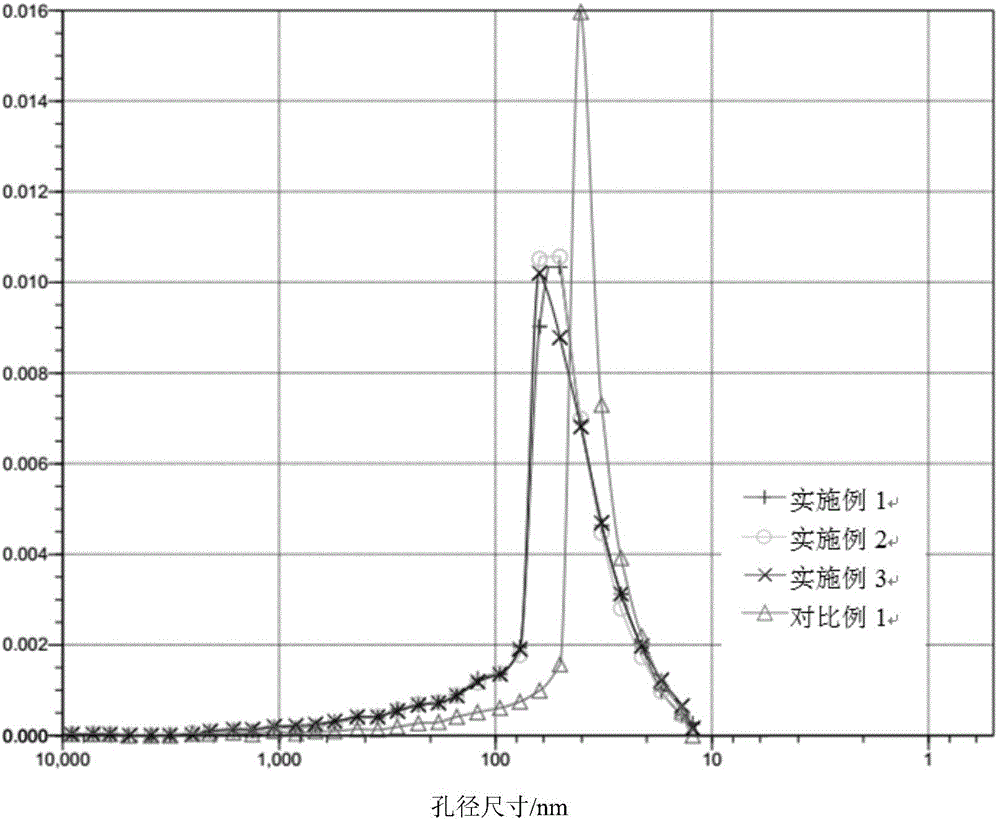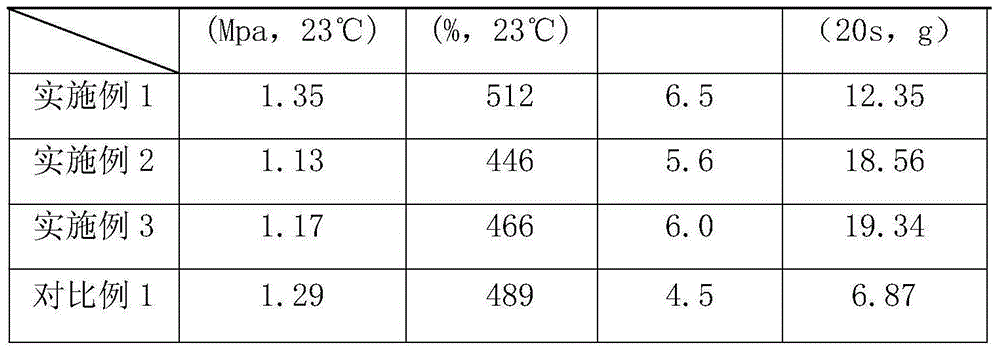Surface modification method of special nano calcium carbonate for silicone sealants
A nano-calcium carbonate and surface modification technology, which is applied in the direction of fibrous fillers, dyed low-molecular organic compound treatment, adhesive additives, etc. Poor rubber extrudability, complex preparation process and other problems, to achieve the effect of small investment, good dispersion and simple process
- Summary
- Abstract
- Description
- Claims
- Application Information
AI Technical Summary
Problems solved by technology
Method used
Image
Examples
Embodiment 1
[0034] (1) The specific surface area is 26.9m 2 / g of calcium carbonate slurry was heated to 85°C and kept at a constant temperature.
[0035] (2) Preparation of surface treatment agent: add 1.0m 3 After heating up to 90°C and maintaining a constant temperature, add 1.0% (calcium carbonate dry basis mass) sulfated sodium oleate, stir for 15 minutes, then add 2.5% (calcium carbonate dry basis mass) stearic acid and palmitate A mixture of acids (stearic acid: palmitic acid = 8:2) was emulsified and stirred for 40 min.
[0036] (3) Add the surface treatment agent prepared in step (2) to the slurry obtained in step (1), and stir for 60 minutes to complete the surface modification.
[0037] (4) The calcium carbonate slurry obtained in step (3) is press-filtered and dehydrated, and a chain-belt drier is adopted at a drying temperature of 100 to 150° C., pulverized, classified and packaged to obtain the special nano-calcium carbonate product for silicone sealant of the present inve...
Embodiment 2
[0039] (1) The specific surface area is 23.3m 2 / g, the calcium carbonate slurry that concentration is 13.0% is heated to 85 ℃ and keeps constant temperature.
[0040] (2) Preparation of surface treatment agent: add 1.0m 3 After heating up to 90°C, keep the constant temperature, add 0.8% (calcium carbonate dry basis mass) sulfated sodium oleate, stir for 15min, then add 2.0% (calcium carbonate dry basis mass) stearic acid and palm A mixture of acids (stearic acid:palmitic acid=8:2) was emulsified and stirred for 40min.
[0041] (3) Add the surface treatment agent prepared in step (2) to the slurry obtained in step (1), and stir for 60 minutes to complete the surface modification.
[0042] (4) The calcium carbonate slurry obtained in step (3) is press-filtered and dehydrated, and a chain-belt drier is adopted at a drying temperature of 100 to 150° C., pulverized, classified and packaged to obtain the special nano-calcium carbonate product for silicone sealant of the present i...
Embodiment 3
[0044] (1) The specific surface area is 23.3m 2 / g, the calcium carbonate slurry that concentration is 13.0% is heated to 85 ℃ and keeps constant temperature.
[0045] (2) Preparation of surface treatment agent: add 1.0m 3After heating up to 90°C and maintaining a constant temperature, add 1.5% (calculated on a dry basis of calcium carbonate) sulfated sodium oleate, stir for 15 minutes, and then add 1.3% (calculated on a dry basis of calcium carbonate) stearic acid and palmitate A mixture of acids (stearic acid:palmitic acid=8:2) was emulsified and stirred for 40min.
[0046] (3) Add the surface treatment agent prepared in step (2) to the slurry obtained in step (1), and stir for 60 minutes to complete the surface modification.
[0047] (4) The calcium carbonate slurry obtained in step (3) is press-filtered and dehydrated, and a chain-belt drier is adopted at a drying temperature of 100 to 150° C., pulverized, classified and packaged to obtain the special nano-calcium carbon...
PUM
| Property | Measurement | Unit |
|---|---|---|
| specific surface area | aaaaa | aaaaa |
| particle diameter | aaaaa | aaaaa |
Abstract
Description
Claims
Application Information
 Login to View More
Login to View More - R&D
- Intellectual Property
- Life Sciences
- Materials
- Tech Scout
- Unparalleled Data Quality
- Higher Quality Content
- 60% Fewer Hallucinations
Browse by: Latest US Patents, China's latest patents, Technical Efficacy Thesaurus, Application Domain, Technology Topic, Popular Technical Reports.
© 2025 PatSnap. All rights reserved.Legal|Privacy policy|Modern Slavery Act Transparency Statement|Sitemap|About US| Contact US: help@patsnap.com



